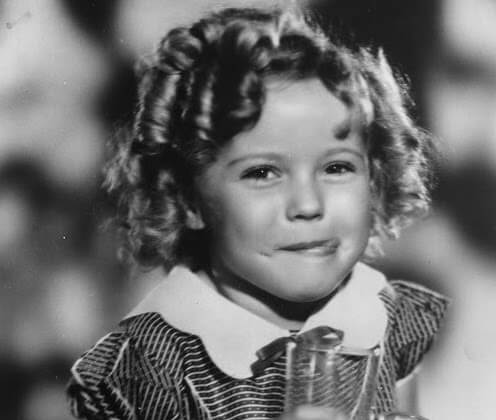A teetotaler’s appreciation of a favorite mocktail—a drink that wasn’t so appreciated by the late star, for whom it was named.
This article was made possible because of the generous support of DAME members. We urgently need your help to keep publishing. Will you contribute just $5 a month to support our journalism?
“Sorry, can I have a Shirley Temple?” You can’t ask for it as a 33-year-old without apology. You can barely ask for it post-puberty. But at 13 I fell in love with Shirley T and we’ve been inseparable ever since. Perhaps it was my parents who first ordered it for me or maybe a kindly waiter thought me worth more than a soda, all I know is that in a now-defunct Lebanese restaurant in Ottawa in the late 1980s I tasted my first Shirley Temple.
“A what?” He wasn’t that young, probably about 25, and it is possibly too much to expect a bartender at a place called No One Writes to the Colonel to know what a Shirley Temple is. But it was hard to confront, several months ago, that my childhood tradition was no longer everyone else’s. And with the passing of Shirley Temple, America’s most popular movie star of the ’30s, the perfect mocktail may soon be gone for good.
What a Shirley Temple is exactly depends on who you ask. For me, it’s a liquid sunrise—grenadine at the base, half orange, half 7-Up—with a cherry on top. I don’t drink it any other way, even though my way might actually be the wrong way. The New York Times claims the original cocktail is actually a translucent pink mix of lemon-lime soda and grenadine without the O.J. (You can actually tell where you are by how your Shirley T is served: Canadian bartenders never forget the juice. U.S. bartenders never fail to.)
Though the birth of the Shirley Temple has been in dispute for eight decades, it is generally believed to have been conceived at the Brown Derby restaurant in Hollywood. That’s what its namesake told the Los Angeles Times in 1985, anyway. But 10 years later, Newsweek was still peddling the tale that a bartender at Chasen’s—the Depression-era Soho House—in Beverly Hills had served it up when Temple “whined for a grown-up drink” at the height of her fame. Perhaps she whined in Hawaii too: Honolulu’s Royal Hawaiian hotel also claimed to have invented the drink upon one of Temple’s visits.
In the end it doesn’t really matter, Temple wasn’t a fan. When NPR’s Scott Simon asked her as an adult about her official drink, she said, “Yes, well, those were created in the 1930s by the Brown Derby Restaurant in Hollywood, and I had nothing to do with it.” Temple even took legal issue with it. In the 1980s, a company called Soda Pop Kids in California attempted to sell bottled Shirley T Sparkling Soda. In the same state, another company pushed the Original Shirley Temple Soft Drink. Temple opposed them both. “I will fight it like a tigress,” she told the New York Times in 1988. “All a celebrity has is their name.”
With her name change came a drink change. The alcoholic version of the mocktail, appropriately named Shirley Temple Black—the actress’s married name—mixes ginger beer with rum and maraschino liquor. I’ve never tried it—I always thought the point of Shirley Ts was the cherry.
I did once order a Roy Rogers, but I felt guilty about it. Named for the cowboy star idolized by children in the 1930s and ’40s, it was considered the boys’ response to the Shirley T—a Coca-Cola with grenadine. But the Coke gave it an unwelcome kick. Gone was the crisp freshness of the 7-Up, in its place was a dark brown bite. In the end, Roy Rogers was just too mature, an adult masquerading as a child, a mock-tail rather than a mocktail.
What makes the Shirley Temple so timeless is that, unlike the Virgin Mary or colada, it is not defined by what it is not. It is whole on its own, innocent but unapologetic. Like the little girl with the dimples who trilled and vibrated in Bright Eyes, its pleasure is its simplicity. “It’s a sweet trip to the candy shop where bon-bons play, on the sunny beach of peppermint bay,” sang Temple, “Lemonade stands, everywhere crackerjack bands, fill the air, and there you are, happy landings on a chocolate bar.”
